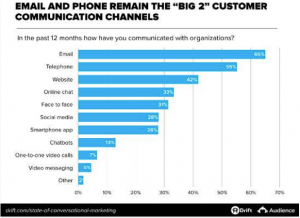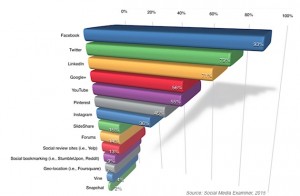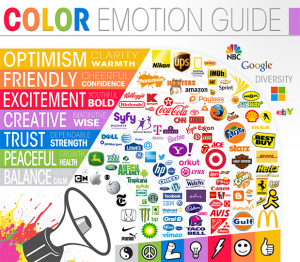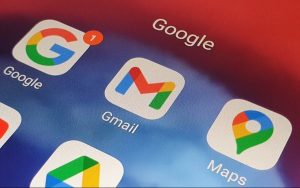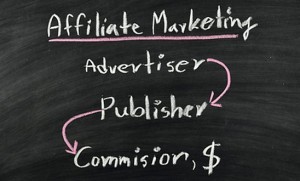From mobile payments to the IoT, columnist Aaron Strout takes a look at the top trends in mobile we should expect to see this year.

Having spent the past week at CES, mobile is fresh in my brain. And while this year’s show was more focused on self-driving cars, drones and roll-up televisions, mobile — especially the Internet of Things — is still very much alive and well.
To that end, 2016 will be a year where we will see more of a distributed mobile web versus one that manifests itself via smartphones and tablets. We will also see a continued hockey-stick upward trend in mobile commerce (More on that later).
Speaking of trends, this will be my third year making predictions for Marketing Land on what’s to come in the world of mobile and location-based technologies. Because our audience is mainly marketers, the goal is to make sure these are trends that are relevant to them. But first, a few mobile stats to get us started:
- eMarketer predicts that there will be two billion smartphones worldwide this year. That’s nearly a quarter of the world’s population and a little over 60 percent of the number of people online (currently just a hair under 3.3 billion). This, of course, makes things like mobile video, commerce and location-based services that much more pervasive.
- More traffic will be offloaded from cellular networks (onto Wi-Fi) than remains on cellular networks by 2016. This means fewer bandwidth constraints to watch video, upload content and perform more bandwidth-intensive activities on mobile devices.
- This year, Gartner predicts that there will be 6.4 billion connected “things,” which is up 30 percent from 2015. This is a number that will continue to grow exponentially as more and more wearables and smart devices come online.
- In the US, of the 5.6 hours per day spent online, a majority of that time (51 percent) is now spent on mobile devices versus 42 percent on laptops/desktops and seven percent on other connected devices. This trend shows that people are beginning to feel equally at ease with performing daily tasks on mobile devices.
There are, of course, dozens of other mobile stats that matter, but we’ll save those for a later post. In the meantime, let’s look at how some of these stats translate into four of this year’s most important mobile trends that marketers should care about.
Looking back at my last couple of years of predictions from 2014 and 2015, I see a few common threads that will resurface this year. For one, we’ll address mobile payments again. We will also talk mobile security — but in a different way than you might think.
Of course, location will also come into play. And yes, there will be more talk about the Internet of Things (IoT). So hang onto your hats, and let’s jump right in.
Mobile Payments/Mobile Commerce Go Big, Really Big
At first blush, this may sound a little bit like “Mobile is going to be big in 2016.” Duh, of course mobile payments and mobile commerce are going to be big. But the question is, how big?
I recently wrote about the mobile tipping point during last year’s Black Friday/Cyber Monday. On Black Friday alone, 36.2 percent of online sales came via mobile, and 57.2 percent of all online traffic that day was mobile.
This year, I see that number pushing north of 50 percent and 67 percent respectively. This will become a trend that spreads out over the course of the year — not just on one of the biggest retail days of the year.
2016 will also be the year that mobile payments truly fulfill their promise. Longtime incumbent PayPal, along with Apple Pay, Android Pay and most recently, Samsung Pay, are enabling the smartphone to become a reliable payment option for those who do prefer to slim down their physical wallets.
Last year in the US, 12.7 percent of smartphone users reported using a mobile wallet provider. EMarketer predicts that number will go up to 20 percent this year, as more and more retailers make it stupid simple to tap their phones on the ePay readers. This number will go significantly higher globally.
Mobile Video Creates A Paradigm Shift In How Content Is Produced And Distributed
Maybe this prediction is obvious, as well, but with an ongoing increase in the number of mobile devices, faster mobile download speeds, greater reliance on Wi-Fi versus mobile data and proliferation of channels, 2016 will be the year we see mobile video explode.
HBO has already made all of its content available in every channel via its HBO Go/Now products. Chromecast now makes it possible to “cast” almost any image or video content from your mobile device to your television. YouTube has more than a billion users, and more importantly, it reaches more 18- to 49-year-olds in the US than any cable network (Look for the high end of this age demographic to continue to creep up).
Why do marketers care? For one thing, how they distribute content matters more than ever. How they advertise also matters. And if you want to engage the younger to middle-aged demographic, taking a longer, harder look at places like YouTube, Facebook and even Snapchat from a video perspective versus more traditional outlets is critical.
How you measure is also changing as traditional measurement vehicles like Nielsen (long thought to be the gold standard) can no longer be expected to entirely capture all of the necessary eyeballs and metrics.
Location-Based Technologies Solidify Role As Feature Vs. Product And Positively Impact Security
As a guy who wrote a book on location-based marketing a good three to four years before I should have, I’ve finally seen location-based technology find its place in the universe.
For several years, many of us were bullish on the concept of the active check-in using tools like Foursquare, Gowalla and Whrrl. But after a few rounds of industry consolidation and a lack of marketers truly grabbing this tool by the horns, the trend evolved from active to passive use of location.
Facebook and Twitter fully embraced this idea as they began pushing for users to tag updates with location as a secondary action versus a primary one. This concept of looking at location-based technology as a feature versus a standalone product has increased the pervasiveness and usage of this useful source of data and engagement.
Now here’s a bit of a curve ball: Many people have often complained that the reason they haven’t used location-based technologies is that they’re concerned about security issues.
Namely, if you check into a hotel in Hawaii on vacation, cyber criminals could have unfettered access to your home. Or if you are supposed to be at work, and you mysteriously check into Fenway Park, the boss knows you might be playing hooky.
But what if we turned things around and looked at location-based technologies as a means to keep us more secure? And that knowing our laptop or keys or bankcard will only work when they are in the proximity of our smartphone, which we keep on us at all times, and that can only be accessed via biometrics?
My friend and longtime security guru Kyle Flaherty teed up this very idea to me recently, and I think it has merit.
A Major Tech Player Gets Closer To Creating The “Neural System” For IoT
I may have buried the headline here, but this is the prediction I am most excited about. Like many other mobile marketers, I have predicted the rise and dominance of the Internet of Things. To date, many of these things have been able to talk to one or two other objects/databases, but few have become truly “smart.”
As such, the benefit we harness from these devices is limited to a fraction of what they could be versus actually creating a smart car, house or city body. And up until now, the main reason this hasn’t happened — particularly in the health space — is due to a lack of a true neural system.
Sure, the internet plays a role in connecting these devices, but not in an intelligent way. The limiting factor is that there is no central place to store data from multiple devices that, in aggregate, could start making smarter decisions.
As an example, think of someone who’s trying to lose weight — where not only steps, but internal body temperature, sleep patterns, stress, heart rate and more could all be tapped. To date, no one company has played this role.
In 2016, I am a strong believer that a company (similar to what Apple’s Steve Jobs did with the music industry 10 years ago) will become this connective tissue for the Internet of Things. Companies like IBM (client) Cisco and Samsung are making plays to do this.
While a year ago, I thought Google might be just the company to facilitate this, I am more convinced than ever that this great unifier will need to be one that is more facile in connecting businesses and data warehouses than people.
So What Else?
Just like the internet became more electricity-like around the mid-2000s (something people just assumed was there), I see mobile following a similar path in 2016. No longer will mobile be a thing, but an enabling force that powers other things.
Location-aware technology — while not ubiquitous — will be available inexpensively for those who choose to use it (Tile is a good case in point).
We also will likely see mobile advertising surpass display advertising, as people of all ages spend more time on their mobile devices than on their laptops or PCs.
And, as a few of my friends suggested when I asked on Facebook which trend they predicted for 2016, maybe it’s the year some of us take more time to set down our mobile devices and just talk to one another.
Some opinions expressed in this article may be those of a guest author and not necessarily Marketing Land. Staff authors are listed here.
(Some images used under license from Shutterstock.com.)
Marketing Land – Internet Marketing News, Strategies & Tips
(73)



